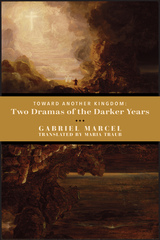11 start with H start with H
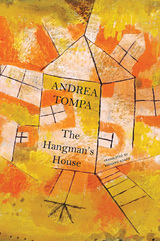
Our narrator, a teenage “Girl,” observes life through tangled, almost interminable sentences, trying to understand and process the many questions in her life: why her family is falling apart; why her mother has three jobs; why her father becomes an alcoholic; why her grandmother dreams of “Hungarian times”; and, most troubling, why there is persecution all around. Brutal though the times are, Girl’s narration is far from a mere indictment. It is suffused with love, tenderness and irony.
Written by a woman and featuring a young woman narrator, The Hangman's House focuses intently on how women play the principal roles in holding together the resilient fabric of society. Evocative of the celebrated wry humor that distinguishes the best of Hungarian literature, Tompa’s novel is a tour de force that will introduce a brilliant writer to English-language readers.

In the 1850s, "Drapetomania" was the medical term for a disease found among black slaves in the United States. The main symptom was a strange desire to run away from their masters. In earlier centuries gout was understood as a metabolic disease of the affluent, so much so that it became a badge of uppercrust honor—and a medical excuse to avoid hard work. Today, is there such a thing as mental illness, or is mental illness just a myth? Is Alzheimer's really a disease? What is menopause—a biological or a social construction?
Historically one can see that health, disease, and illness are concepts that have been ever fluid. Modern science, sociology, philosophy, even society—among other factors—constantly have these issues under microscopes, learning more, defining and redefining ever more exactly. Yet often that scrutiny, instead of leading toward hard answers, only leads to more questions. Health, Disease, and Illness brings together a sterling list of classic and contemporary thinkers to examine the history, state, and future of ever-changing "concepts" in medicine.
Divided into four parts—Historical Discussions; Characterizing Health, Disease, and Illness; Clinical Applications of Health and Disease; and Normalcy, Genetic Disease, and Enhancement: The Future of the Concepts of Health and Disease—the reader can see the evolutionary arc of medical concepts from the Greek physician Galen of Pergamum (ca. 150 ce) who proposed that "the best doctor is also a philosopher," to contemporary discussions of the genome and morality. The editors have recognized a crucial need for a deeper integration of medicine and philosophy with each other, particularly in an age of dynamically changing medical science—and what it means, medically, philosophically, to be human.

This study of the sometimes stormy career of a brilliant and colorful talmudist offers a broad picture of medieval Hispano-Jewish culture.
Meir Abulafia (ca. 1165-1244), commonly called Ramah, was born into the old Jewish aristocracy of Muslim Spain and educated in the best Judeo-Arabic tradition, but lived his whole life under the new political and cultural realities of Christian Spain. Mr. Septimus portrays Ramah's career as a lawyer, exegete, poet, and theologian in an age of rapid cultural change. His book describes the intellectual cross-fertilization and conflict that resulted from new connections with European Jewish communities to the north. It focuses, in particular, on the great controversy over the philosophical rationalism of Maimonides, which Ramah initiated and in which he played a major role. This clash dominated Jewish intellectual history for three centuries and parallels important developments in Latin Christendom.

Now Available from Duke University Press
Originally published in German in 1948, Noth’s application of a traditio-historical approach has made this book required reading for students and scholars

A History of the Alans in the West was first published in 1973. Minnesota Archive Editions uses digital technology to make long-unavailable books once again accessible, and are published unaltered from the original University of Minnesota Press editions.
The Alans, a nomadic people from the steppe lands of south Russia, were among the many invaders of the Roman empire who helped to bring about its fall. Unlike the majority of the invaders, they were not Germans — they were Indo-Iranians—and they were not, like most barbarians, organized in agricultural communities. This history traces their westward movement from the time of their first mention in sources of classical antiquity through the early Middle Ages.
Professor Bachrach discusses the social and religious institutions of the Alans and especially their military customs. As he shows, they contributed much to the military repertoire of the West, especially the feigned retreat tactic and the role of the cavalry as the primary part of the army. In their westward movement the Alans were assimilated by people in Gaul and Italy and served the empire in a military capacity during the fourth and fifth centuries. IN addition to their military and political impact in several areas, the Alans also influenced early medieval artistic styles, literary developments, place names, and personal names.
A number of illustrations provide examples of the artistic influence of the Alans, and there are maps pertinent to the history.
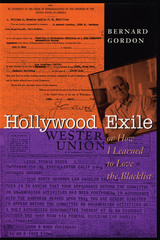
The Hollywood blacklist, which began in the late 1940s and ran well into the 1960s, ended or curtailed the careers of hundreds of people accused of having ties to the Communist Party. Bernard Gordon was one of them. In this highly readable memoir, he tells a engrossing insider's story of what it was like to be blacklisted and how he and others continued to work uncredited behind the scenes, writing and producing many box office hits of the era.
Gordon describes how the blacklist cut short his screenwriting career in Hollywood and forced him to work in Europe. Ironically, though, his is a success story that includes the films El Cid, 55 Days at Peking, The Thin Red Line, Krakatoa East of Java, Day of the Triffids, Earth vs. the Flying Saucers, Horror Express, and many others. He recounts the making of many movies for which he was the writer and/or producer, with wonderful anecdotes about stars such as Charlton Heston, David Niven, Sophia Loren, Ava Gardner, and James Mason; directors Nicholas Ray, Frank Capra, and Anthony Mann; and the producer-studio head team of Philip Yordan and Samuel Bronston.

Bernard Fenik analyzes the style of the Iliad and the Nibelungenlied, showing how the narratives work. In the process he sheds new light on the artistry of ancient and medieval epics. This in turn touches on the long-debated question of whether and to what extent they were orally composed.
In the Homeric poems, medieval German epics, and the Chanson de Roland, Fenik finds similarities in the shaping of episodes and scenes. His analysis of narrative structures reveals controlled composition even where the language is heavily formulaic and the action highly stylized. This level of artistic control does not in itself rule out oral composition but does force a redefinition of the terms in which that theory is applied.
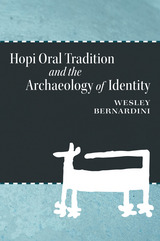
Wesley Bernardini now draws on an unconventional source, Hopi traditional knowledge, to show how hypotheses that are developed from oral tradition can stimulate new and productive ways to think about the archaeological record. Focusing on insights that oral tradition has to offer about general processes of prehistoric migration and identity formation, he describes how each Hopi clan acquired its particular identity from the experiences it accumulated on its unique migration pathway. This pattern of “serial migration” by small social groups often saw the formation of villages by clans that briefly came together and then moved off again independently, producing considerable social diversity both within and among villages.
Using Anderson Mesa and Homol’ovi as case studies, Bernardini presents architectural and demographic data suggesting that the fourteenth century occupation of these regions was characterized by population flux and diversity consistent with the serial migration model. He offers an analysis of rock art motifs—focusing on those used as clan symbols—to evaluate the diversity of group identities, then presents a compositional analysis of Jeddito Yellow Ware pottery to evaluate the diversity of these groups’ eventual migration destinations.
Evidence supporting serial migration greatly complicates existing notions of links between ancient and modern social groups, with important implications for the implementation of the Native American Graves Protection and Repatriation Act. Bernardini’s work clearly demonstrates that studies of cultural affiliation must take into account the fluid nature of population movements and identity in the prehistoric landscape. It takes a decisive step toward better understanding the major demographic change that occurred on the Colorado Plateau from 1275 to 1400 and presents a strategy for improving the reconstruction of cultural identity in the past.

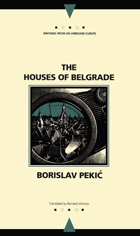

READERS
Browse our collection.
PUBLISHERS
See BiblioVault's publisher services.
STUDENT SERVICES
Files for college accessibility offices.
UChicago Accessibility Resources
home | accessibility | search | about | contact us
BiblioVault ® 2001 - 2025
The University of Chicago Press



